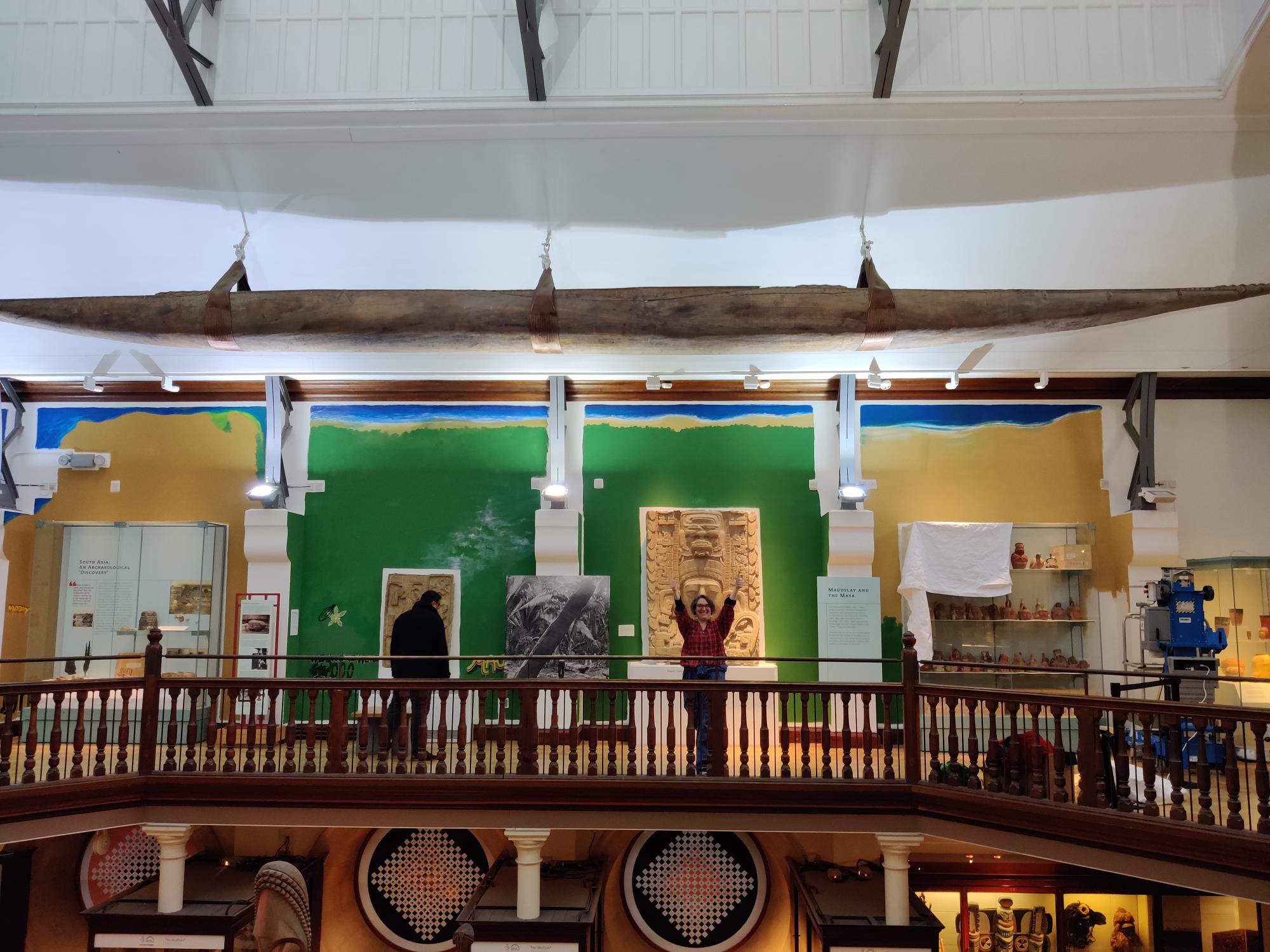
|
A Subversive Collaboration: People and Stuff site-specific painting, participatory, socially-engaged painting practice |
|
Artist Statement
My aim for 'A Subversive Collaboration' is to create a visual language for complex relationships between people, our pasts, our present, and the history of our material culture. I want to be able to 'map' relationships between places, people and things across time and space.
A Subversive Collaboration is located around the existing 'world archaeology' display in the Museum of Archaeology and Anthropology, University of Cambridge.
It is extremely difficult to photograph because of the scale, which is approximately 3m x 50m, so I will describe it here.
I have added to the wall schematic birds eye views of the landscapes where the objects come from: eg the Pacific region around Torres Strait (between Australia and New Guinea), Mexico-Guatamala-Nicaragua-Costa Rica (the area of the Mayans), Britain and Europe (the area of the Romans), Nigeria (the site where the Benin bronzes and other artefacts were looted in a punitive war) etc
The landscapes are there to try to put the collections back into their physical context. On top of these, there is graffiti - tags and images by museum staff, volunteers, and communities. The reason for the graffiti is because graffiti is the language of free expression. No one is censored.
Together the graffiti embodies historical and contemporary connections to the objects and the places where the objects came from. For some, this is highly controversial. Some prefer the apparent neutrality of white walls. I beg to disagree - white walls are not neutral. They never were. They deny existing relationships to the past and our material culture from across the world, here for historical and contemporary colonial reasons.
Working with
archaeologist
Jimena Lobo Guerrero Arenas
education and outreach expert
Sarah-Jane Harknett
and volunteers, staff and visitors to the museum
Supported through Arts and Humanities Research Council Impact Accelerator Grant and Royal College of Art grant
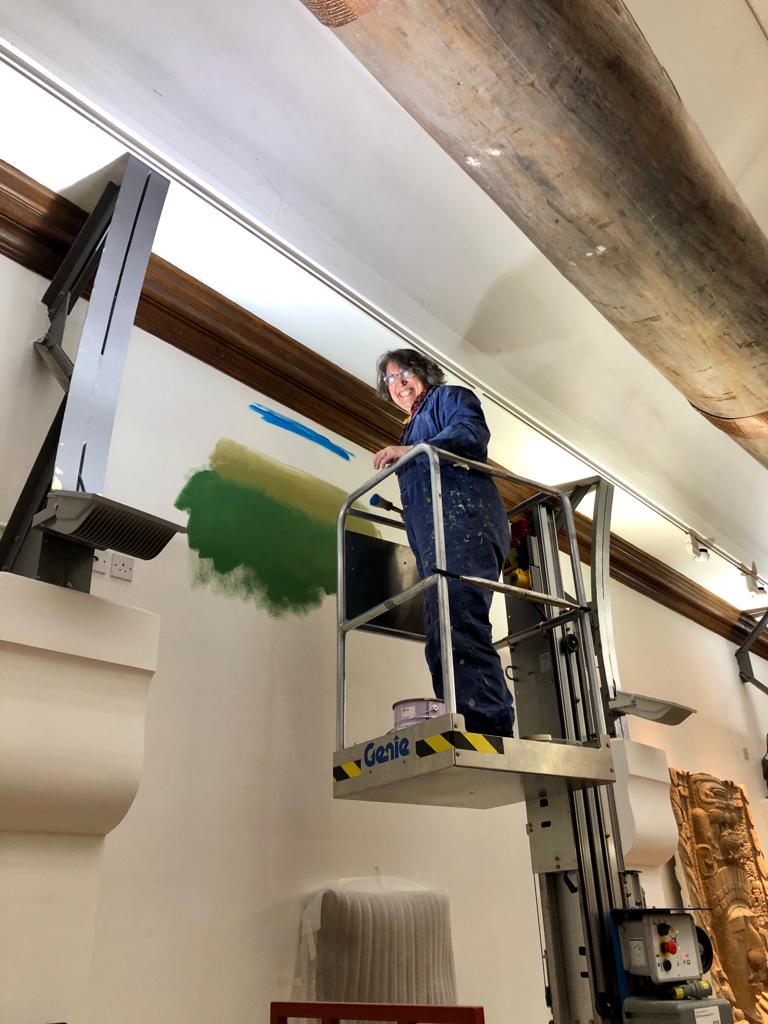
First day replacing white walls with colour
Dec 2023
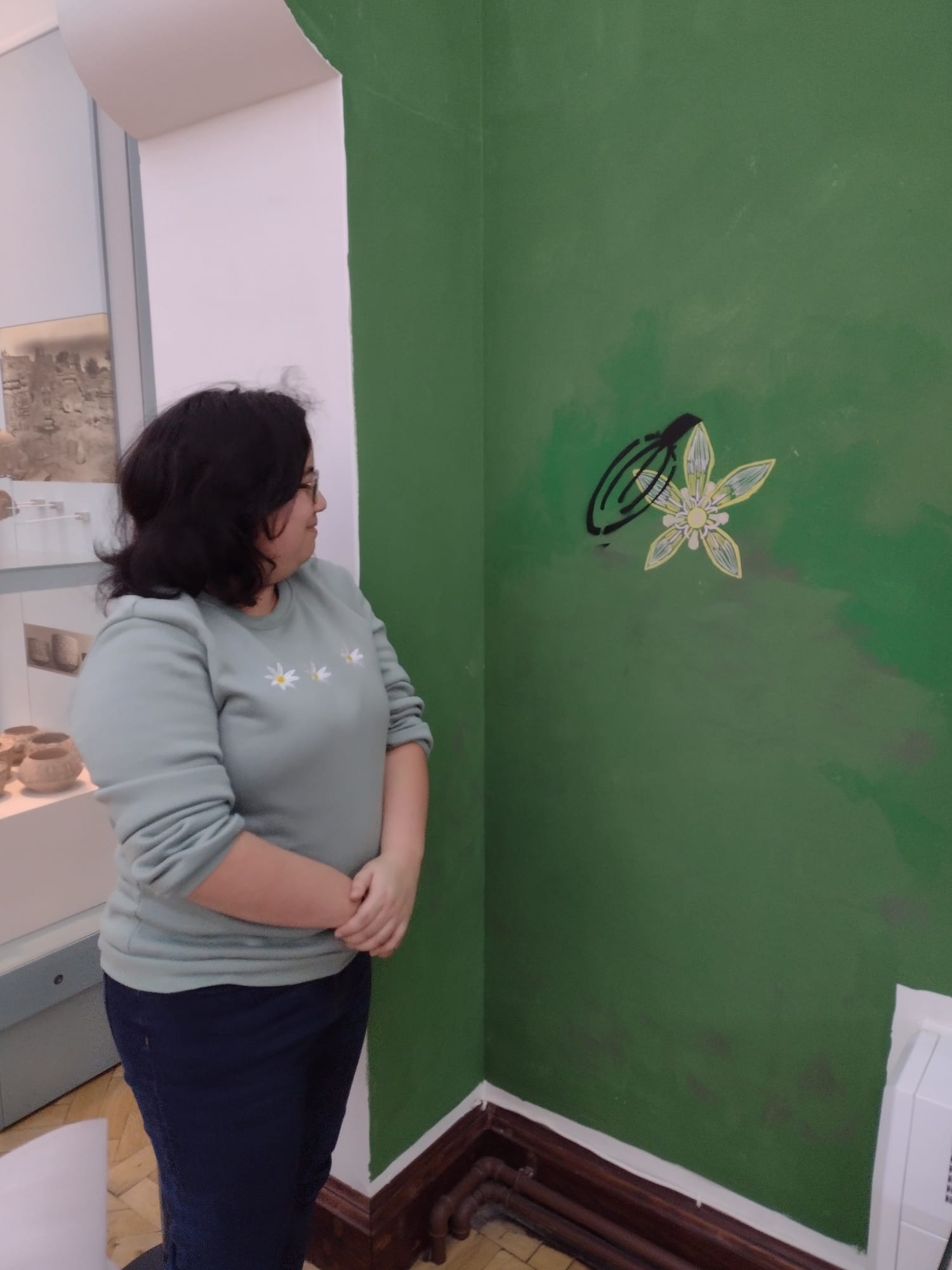
Museum volunteer, Tiffany,
was our first volunteer combining stencil spray-painting
with hand-painting directly onto the walls of the museum (2023)
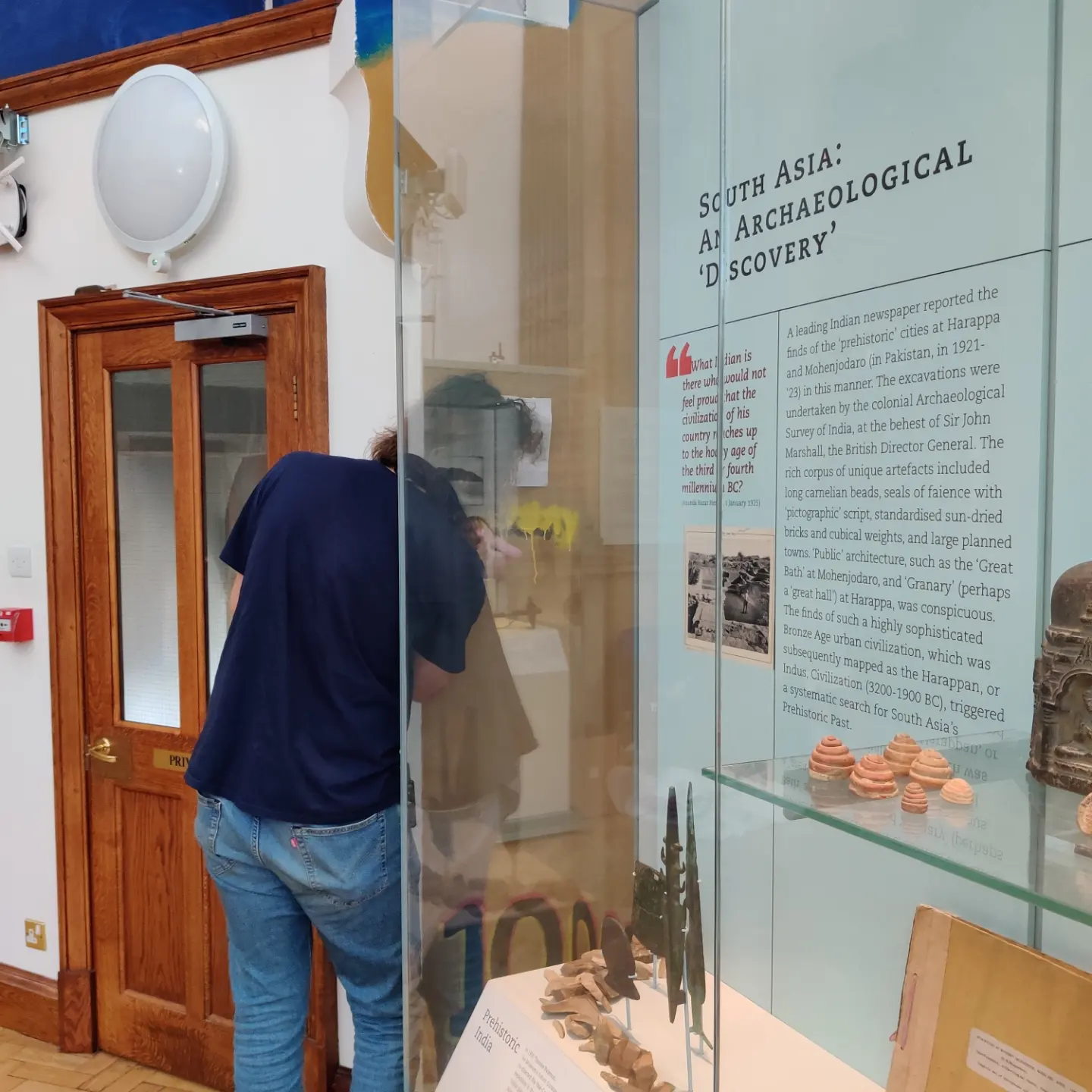
More volunteers, like George, trying out tagging (2024).
This one was designed by Kate.
It's "Maudslay's tag".
Alfred Percival Maudslay (1850-1931) was a British Colonial Administrator
who seems to leave his mark on many continents
and we have the museum collections to prove it.
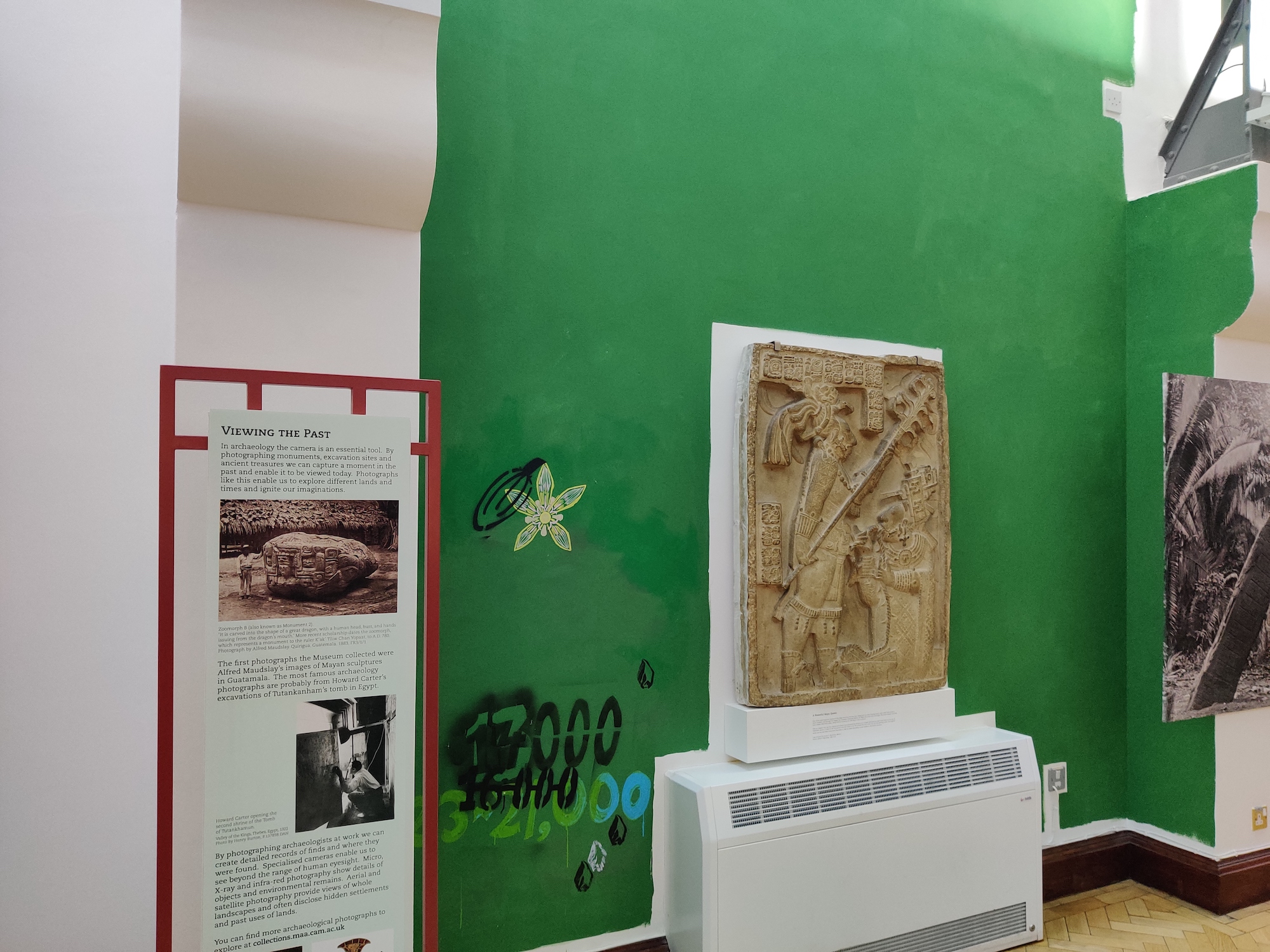
More graffiti
this time by museum curators (2023)
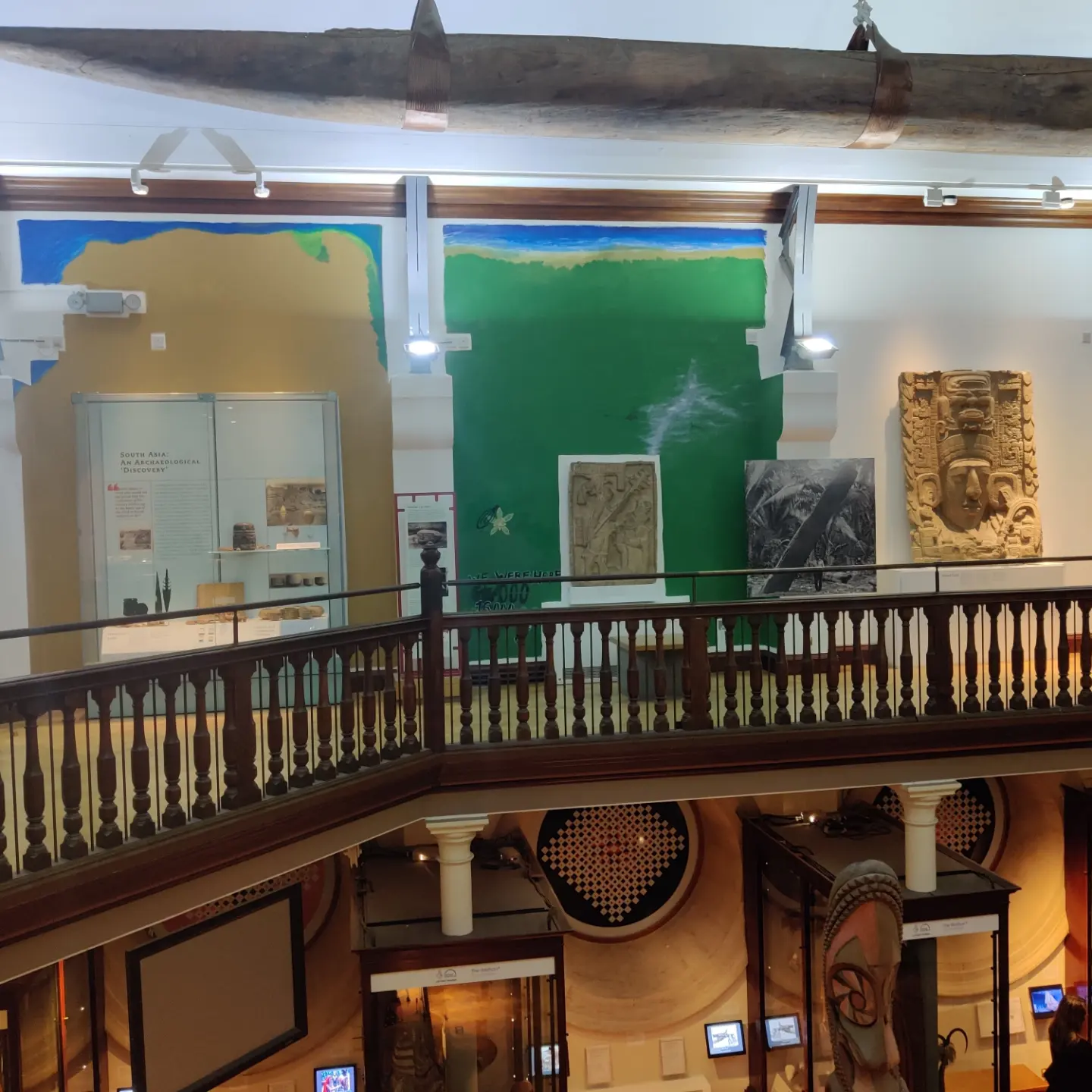
Indus Valley and Central American birds eye view landscapes before graffiti additions
(Photographed Jan 2024)
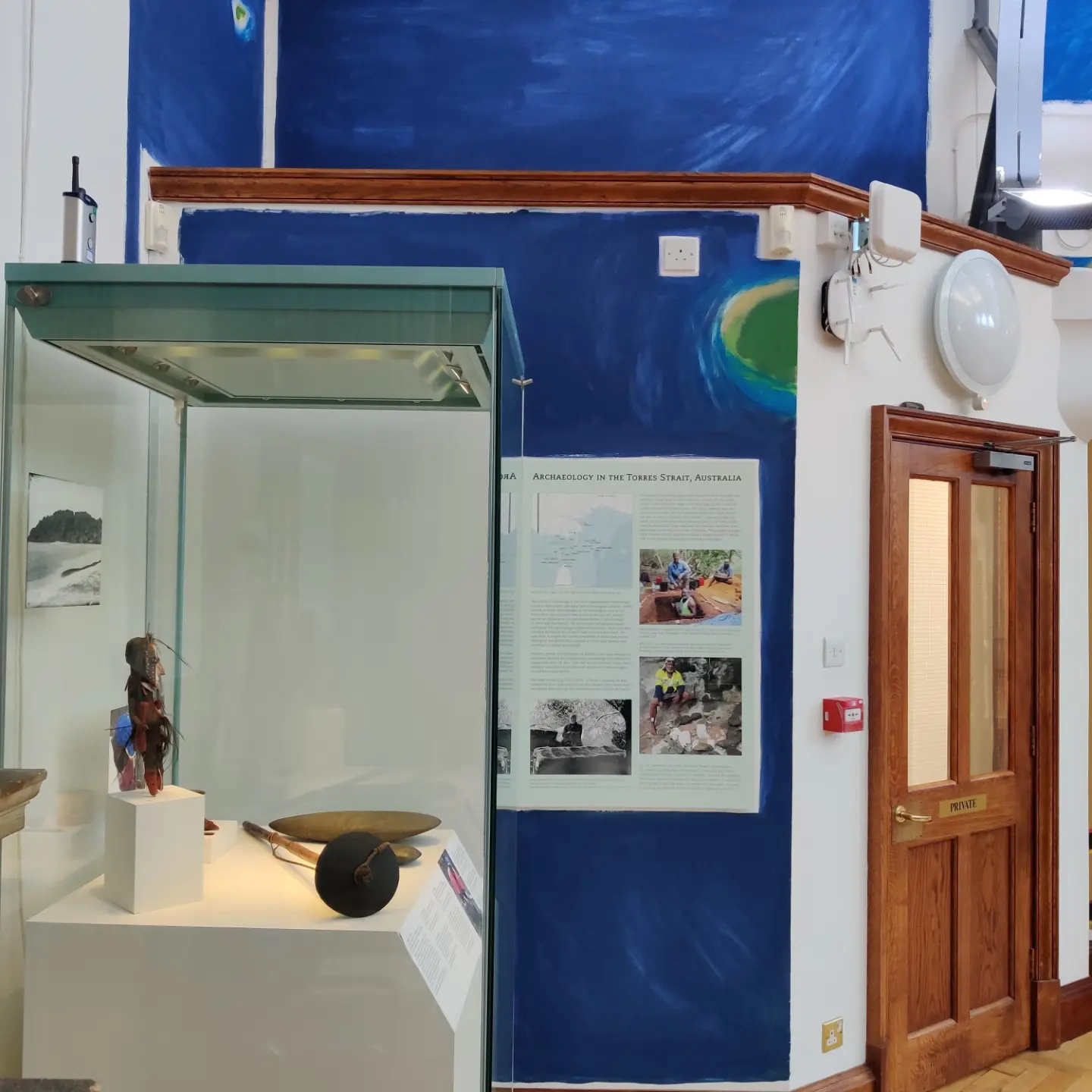
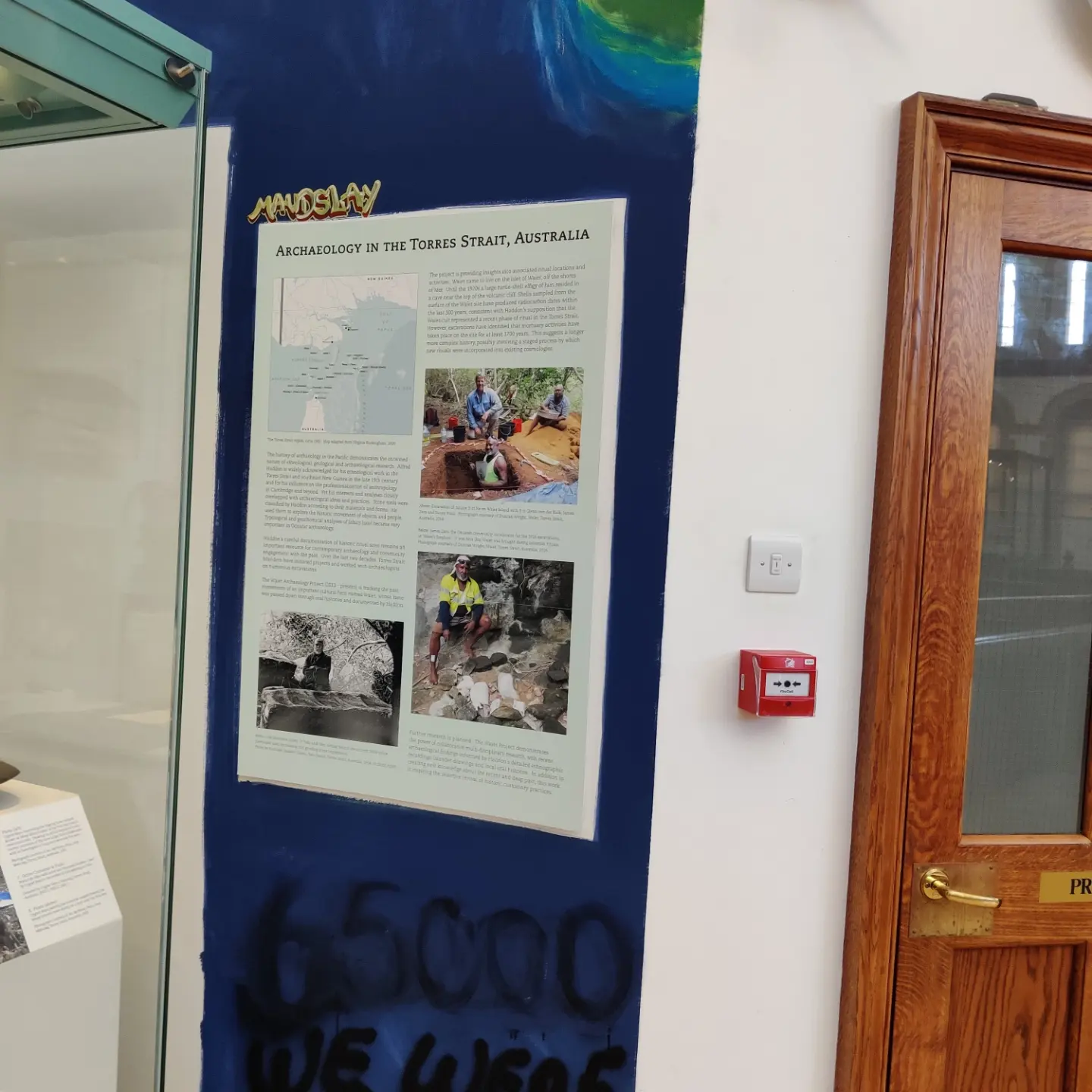
Torres Strait Islands in the Pacific Ocean with
graffiti about when humans first got there (Photographed Feb 2024)
Painting is not usually associated with participatory art practices.-
When thinking about participatory art, usually other types of practice come to mind - eg Jeremy Deller and Alan Kane's 'Folk Art Archive' (2005-2027). Deller and Kane worked with the general public for good critical artistic reasons: to make an artwork about who is included and who is excluded from the archive - what voices count, and what voices don't count - who is a Tate Gallery artist and who isn't.
Even though painting in the Western tradition is rarely participatory, it is often socially-engaged.
It can also be large-scale. One of my favourites in recent times is Barbara Walker and then there is the immensely important work of Sonia Boyce, fellow interventionist into museum spaces working inclusively and collaboratively.